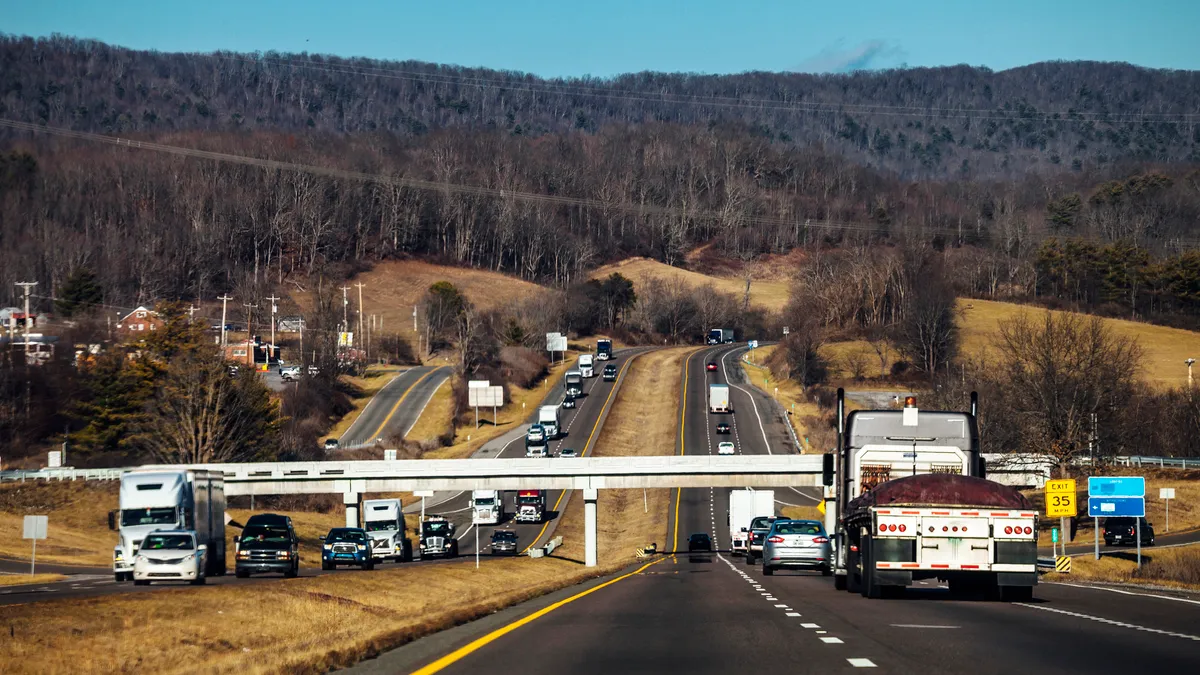Dive Brief:
- Trucking industry leaders say the number of drug violations among drivers in recent years are contributing to an ongoing worker shortage.
- Werner Enterprises said in a March investor presentation that drug and alcohol testing requirements are one factor limiting the supply of drivers. The American Trucking Associations made a similar claim in an October 2022 report.
- Both stakeholders acknowledged other factors, such as the rising age of drivers and changes to workers’ lifestyles, that contribute to the industry's staffing difficulties.
Dive Insight:
The stakeholders' comments come as the trucking industry has seen positive drug and alcohol cases rise by nearly 18% in 2022, compared to the prior year, as reported to the Federal Motor Carrier Safety Administration's Drug and Alcohol Clearinghouse.
FMCSA’s clearinghouse screens for a variety of substances, but most of its positive drug tests from 2020 to 2022 stem from marijuana, which accounted for over 101,000 cases in that time period.
The high percentage of clearinghouse cases associated with marijuana has garnered the attention of trucking executives and lobbyists.
"While we fully support the Federal Motor Carrier Safety Administration's Drug and Alcohol Clearinghouse, it's taken a lot of people off the road," ATA VP of Workforce Policy Nick Geale said last year at a North Jersey Transportation Planning Authority committee meeting. "We don't want them on the road if they have a problem, but obviously, that creates additional pressure on our ability to have an efficient supply chain."
The ATA’s research nonprofit, the American Transportation Research Institute, has gathered input from the industry on the issue, receiving survey responses from hundreds of carriers and thousands of drivers, ATRI Vice President Jeffrey Short told Transport Dive. It’s preparing a report that’s expected to arrive in coming months.
“The states have one set of laws and the federal government has another set, and that's causing many issues,” Short said. With federal rules trumping state regulations, employee screenings can translate to FMCSA violations.
This tension is continuing as states have changed their standards. Twenty-one states have legalized recreational marijuana and 38 states now allow the drug for medical use, according to the National Conference of State Legislatures. That’s a significant change for the U.S. since the ATRI did a previous marijuana report in 2019 — when just 10 states had legalized recreational use.
“The overall population of the United States ... has easier access to marijuana at this point,” Short said of states permitting recreational marijuana. “In all of these states, where you can literally go to a storefront and purchase it, it doesn't involve a doctor or anything like that.”
The ATA has said the driver shortage has hit concerning highpoints in recent years and could worsen as drivers retire and freight demand grows over the years. Last year, the industry needed nearly 78,000 drivers, according to the association’s estimates.













